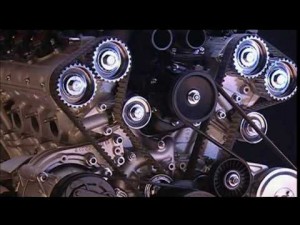Aside from size specifications (length, width, etc), one of the most common questions you’ll hear when walking down the fastener aisle of your local hardware store is ‘which material should I use?’. Good question. And while most think you have to be a mechanical engineer to figure this stuff out, it’s really keeping the following 4 fundamentals top-of-mind: strength, corrosion, temperature and cost. OK, and a Masters of Engineering degree couldn’t hurt, too.
Strength
Overall strength of fasteners is measured in pounds per square inch, or psi. When talking pure steel, low carbon steel sits at the bottom at 60,000 psi. As you move up in strength you have medium carbon heat-treated steel with 120,000 psi, then low alloy steel at 150,000+ psi, up to super alloys which exceed 260,000 psi. And seriously, unless you’re building rockets, strengths above 180,000 psi are rarely required.
Let’s take a look at the strengths of some various fastener materials..
The Stainless Steel family includes 3 main categories: Austenitic, Ferritic and Martensitic. Austenitic includes grades 303, 304, 305, 316 & 321 and range from 90,000 to 125,000 psi. Ferritic includes grades 430 and 430F and hovers around 70,000 psi. Martensitic includes grades 410, 416 & 431 and climbs up to 180,000 psi. These ranges often depend on whether they can be subject to heat-treating, cold working or chemical hardening.
Other, non-ferrous metals include Aluminum alloys, Copper-based alloys, Nickel-based alloys, titanium and plastics. Pure aluminum starts at 13,000 psi, while its 2024 and 7075 grades get up to 60,000 psi. Copper-based alloys such as brass and bronze range from 50,000 psi (462 naval brass) to 105,000 psi (630 aluminum bronze). Nickel-based alloys such as Monel have 80,000 psi, with K-Monel (mixture of nickel, copper and aluminum) hitting the 130,000 psi mark. Titanium can support up to 200,000 psi. And then there are plastics, which would not be considered for their strength property, although some can support up to 10,000 psi.
In a separate, follow-up article, we’ll discuss the various properties of fasteners that all relate to its overall strength; i.e. physical, mechanical and performance properties. We’ll specifically target mechanical properties, touching upon tensile, yield, shear, torsional and fatigue strength; hardness; toughness, ductility and proof load.
Corrosion
When it comes to fasteners, corrosion is the wearing away of metal due to interactions it has with chemicals in the environment. The most common form of corrosion is electrochemical oxidation, where the metals react with oxygen forming an iron oxide, otherwise known as rust. Other forms of corrosion include galvanic actions, high temperature oxidation and stress corrosion embrittlement.
To combat corrosion, steel fasteners will be plated or coated, which we’ll discuss in a later post. For example low alloy steels, commonly used on large structures like bridges, will be enriched with copper which foster a build-up of a special protective oxide layer over the raw steel. For marine or chemical-rich environments (e.g. paper mills), stainless steels and nonferrous alloys should be employed.
Temperature
Fasteners can be affected by extreme temperatures, both elevated and sub-zero. High temperatures, especially when 500 degrees Fahrenheit is eclipsed will negatively affect the strength of fasteners, lead to plating/coating breakdown, result in high-temp oxidation/corrosion, expansion and galling/seizing.
As a rule, nonferrous and non-metal fasteners should be avoided under high temperatures. For temps up to 450 degrees Fahrenheit, medium carbon and low alloy steels. Stainless steels and chromium-molybdenum steels (ASTM: A193 & A194) do well from 450 – 900 degrees. Super alloys like A-286 and Inco 718 last to 1200 degrees, while nickel-cobalt alloys such as M252, Rene 41, Waspalloy and Udimet can handle up to 1600 degrees. Columbium, tantalum and tungsten can perform up to 3000 degrees.
On the other end of the spectrum, severely cold environments will lead to increased yield, tensile and shear strengths, however ductility drops off as well as the fastener becoming brittle. That said, low carbon steels does not hold up in low temps. Conversely, ASTM A320 can handle down to -100 degrees Fahrenheit, while stainless steels can get down to -300 degrees. Aluminum (e.g. 2024-T4), titanium alloys, copper, brass and teflon also perform well. For extreme low temps below -450 degrees super alloys such as Inco 718, Unitemp 212, A-286, Rene 41 and Waspalloy.
Cost
Cost is probably the most clear-cut determinant of selecting your fastener material. Most plastics and low carbon steel are the cheapest options, followed by stainless steel, copper alloys, aluminum alloys, A-286, Monel, titanium, and all the way up to those that withstand blistering temperature ranges (e.g. Inco 718, Unitemp, etc)
Summary
The best thing to do is think about your project and consider these four determinants. While there will be some overlap in terms of strength and corrosion & temperature resistance, they will often inversely correlate to cost; i.e. the stronger a fastener, the more expensive it tends to get.
Let’s make this easy to digest…
- Light corrosion – steel with a coating like zinc
- Heavy corrosion – steel with a galvanized coating, stainless steel or a nonferrous alloy
- Limited magnetism – austenitic stainless steel, aluminum, copper alloy or plastics
- High electrical conductivity – aluminum or copper
- Limited electrical conductivity – plastics (non-metals)
- Light weight – aluminum (least costly) to titanium (most costly)
- Temperature resistance – stainless steel and super alloys
- High strength – super alloys and titanium
- Cost savings – low carbon steel, plastics
In a follow-up article, we’ll look at the various materials out there and discuss their strengths and weaknesses in regard to the four considerations discussed in this post. That should give you a leg-up over 90% of the rest of the fastener-buying population out there. Then you can walk into your local home improvement store and hold court. I bet even the guy working the hardware aisle will sit in.




Trackbacks & Pingbacks